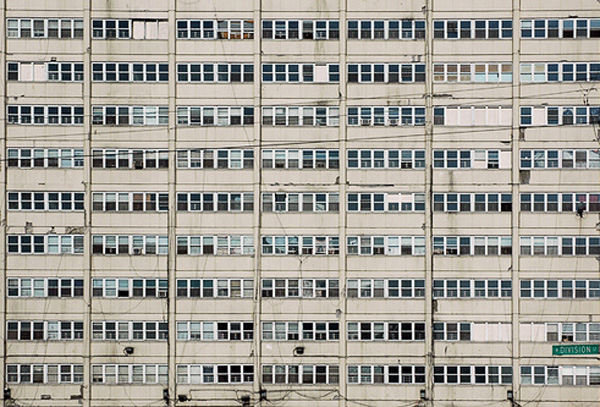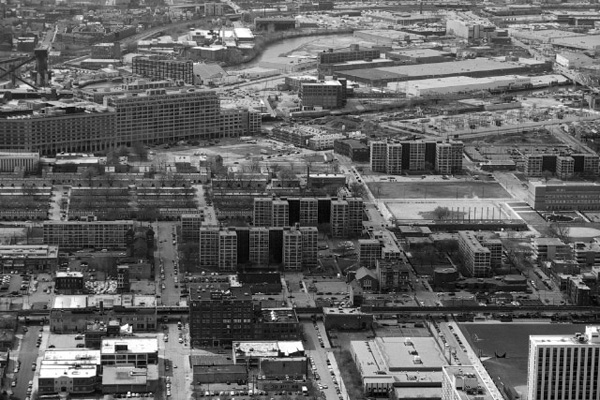
 ‘These are the laws of entropy; ‘There is no way back,’ like Adonis used to say down in Chicago’s Cabrini Green,’ says Cyprien Gaillard in our current issue, referring to a neighborhood in northern Chicago which became synonymous with the failure of public housing.
‘These are the laws of entropy; ‘There is no way back,’ like Adonis used to say down in Chicago’s Cabrini Green,’ says Cyprien Gaillard in our current issue, referring to a neighborhood in northern Chicago which became synonymous with the failure of public housing.
Formerly known as ‘Little Hell,’ the site of the Cabrini-Green public housing complex was notorious in the early twentieth century for its inhabitants’ poverty and dilapidated buildings. During World War II, the Chicago Housing Authority razed Little Hell and built a low-rise apartment project for war workers, which was subsequently added on, housing at its peak more than 15,000 people. At first, the housing was integrated and many residents held jobs – in fact, Cabrini-Green is adjacent to two of Chicago’s wealthiest neighbourhoods.
Things changed, however, in the years after World War II, when the nearby factories that provided the neighborhood’s economic base closed and thousands were laid off. At the same time, the cash-strapped city began withdrawing crucial services like police patrols, transit services, and routine building maintenance. Lawns were paved over to save on maintenance and damaged apartments were simply boarded up instead of rehabilitated and reoccupied. Years of negligence led to increasing numbers of violent crime, rampant vandalism and drug trafficking, with the projects widely controlled by street gangs. The case of a nine-year-old girl that was raped and poisoned in a stairwell, leaving her blind, paralyzed, and unable to speak, sealed Cabrini-Green’s reputation as one of the most dangerous areas in the US. In 1981, as a publicity stunt, then-Chicago Mayor Jane Byrne moved into a fourth-floor apartment – backed by a number of police officers and a substantial personal bodyguard detail, she stayed for only three weeks.
In 1999, the city government decided to finally demolish the entire housing complex of Cabrini-Green and replace it with mixed-income housing. At present, only few of the original buildings are still in place, with most inhabitants forced to relocate.

2 Comments
Many people have a new vision for cabrini green. My vision is that it could be remodeled to perfection and called rent controlled apartments instead of projects, and therefore become self sustaining. not relying totally on public funds. mixed income is a very good concept. I am so sorry for the people who had to live under extreme povery and lack of employment. That lead to a total devastation to any human’s dignity. When desperation and outrage ste in people will do anything. Job training and investment in people was very crucial as the city wealthier. jobs are hope and dignity.
This an interesting article, as I lived in the Chicago suburbs for most of my youth. After I moved in 1990, I never heard anything more about Cabrini Green. It was only recently that I began studying urban development, and was reminded of “America’s Worst Neighborhood” and the lore surrounding it. I always wondered how that area became such a black eye on the face of public housing. Thanks for posting this.